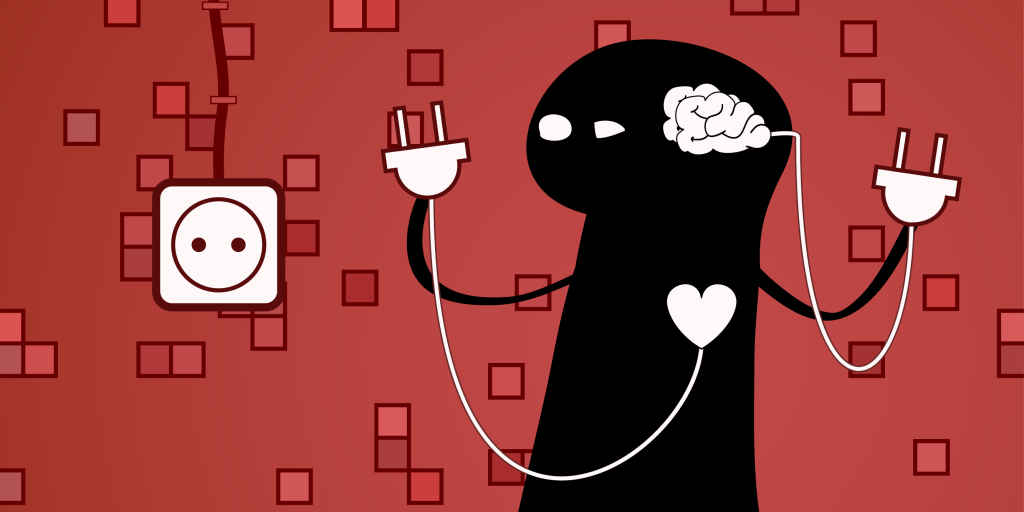There is a story about
Virginia Satyr ... Already world, she traveled around the country giving lectures. And here is some university, a packed hall, everyone is waiting for it to come out! And then a little stooped old woman comes out and begins to speak in a boring monotonous voice: "Today we will talk about such strong feelings as happiness, love ..." listening to THIS, Virginia steps aside, straightens up and, pointing to her previous location, says in a normal emotional voice: “What you just saw is called incongruence. If the posture, gestures, facial expressions do not correspond to the content of speech, this discrepancy causes the strongest rejection. The most important skill of any successful person is to be congruent! And that's why we are starting our seminar with this topic! "
There are several versions of this story, so if you have heard it in another retelling, do not be overly indignant.
So let's talk about congruence. You are probably already familiar with this term - in geometry, "congruence" communicates the similarity of figures and is denoted as equality with a wavy line on top ≅.
The term "congruence" in psychology was introduced by Karl Rogers, one of the founders of humanistic psychology,
and the term came to NLP through Virginia Satyr.
Humans are complex creatures. And they often want completely different things at the same time.
- I want this cake, but it's bad for the weight.
- I ought to work, but I don't want to.
- It's time to get up, but I really want to sleep.
- I love him, but he is so unsettled.
- He's an idiot, but you can't say it directly in the eyes.
“Yes, on the one hand, and no, on the other.
By the way, the conflict between "want" - the desire to get something right now - and "need" - an action based on the consequences - is one of the most common.
Naturally, this will manifest itself in behavior. In words, facial expressions, muscle tension, breathing and voice. Now, if the signals coincide, then in NLP they talk about congruent behavior or congruence. For example, a person says that he is “confident in himself” and demonstrates the appropriate non-verbal: the head is raised, the shoulders are relaxed, the posture is straight, breathing is even.
The idea of someone else's congruence is associated with a person's experience, with what elements of someone else's behavior usually correspond to each other. For example, if he is used to people with high status showing arrogance, then the friendly behavior of the “status” person will be incongruent for him.
But when the signals are different: a person says in the same way that he is “confident in himself,” but his head is lowered, his voice is quiet, stooped and his breathing is constricted, then these are signs of incongruence. That is, for some reason, he thinks what needs to be said about his confidence, but at the same time he does not feel this very confidence in himself. People often say what they are expected to hear (in their opinion), or what they think is more correct, or what is more beneficial to them. Or they are simply embarrassed to tell the truth.
Congruence communicates a person's inner coherence and enhances rapport.
Have you heard the phrase: "He himself believes in what he says." This is just a message about congruence. A congruent person carries away with him, people follow him, he is perceived as “sincere”.
So, you already understood that first of all they compare content and non-verbal.
- Girl, can I meet you?
- No. [nodding his head in agreement]
But the content should be about evaluation. Because if a person gives out some information that cannot be conveyed non-verbally: “I have a salary of 50,000 rubles, now it's twenty hours, tomorrow I'll go to the dacha” - there is nothing to compare it with. But if he informs about the attitude: I like it, I believe, I am sure, it is difficult, I am upset, I am happy - then this is precisely where congruence can be calibrated.
But simultaneous non-verbal messages can also differ. For example, a person is more actively gesturing with his right hand and the left is lying idle - this is also incongruent. So it is also worth comparing the signals of the right and left side of the body.
You probably remember from school that people have two different hemispheres, one is more logical (left), and the other is more emotional, synthetic (right). And the left hemisphere is responsible for the right side of the body, and the right hemisphere is responsible for the left. All this is arbitrary rather, but as a first approximation it will do. Symmetry - the uniformity of movements of both hands, the same muscle tone on the right and left, an even posture, etc. - says that "the heart is in tune with the mind."
And one more thing is just a proper demonstration of the state.
The states of a thing are complex and manifest themselves in all areas - from voice to posture. And experience says that if a person is happy, then he has a smile, a higher voice, and a more direct posture. For example, "crow's feet" (wrinkles near the corners of the eyes) is a good sign of a sincere smile. If the smile is artificial, then there will be no wrinkles at the outer corners of the eyes, different muscles are used.
An example of an "artificial" smile (see photo) - in this case, other muscles of the face work and "crow's feet" are not formed. Which is probably good for the skin around the eyes and shots for glossy magazines.
Here you will have to rely more on personal experience - as people usually do. Rejoicing, upset, showing grief or confidence.
This is where calibration comes to our aid - you can observe how a person sincerely demonstrates the state and compare it with when he does it “on purpose”.
But! Before that, we talked about simultaneous congruence - this is when both signals are at the same time. But there is also consistent incongruence.
First one signal, then the opposite. Moreover, all this can even be in one system.
- Oh sure. Although ... Maybe ... you know ...
Or when a person asserts something, and then shrugs his shoulder - a signal of internal disagreement with what was said.
Stuck in the doorway? When you have already gone beyond the threshold, but you remember what needs to be done. Step back, and you realize that you can finish it later. You go out - pulls back. Also a manifestation of consistent incongruence.
Consistent congruity is calibrated as a firm opinion on something or pursuit of a goal. So we look at the consistency and sequence of actions.
He said that he would repay the debt - and returned it. I agreed to go to my mother-in-law on Saturday - and went. He wrote that he would lose weight by summer - and he did.
How to show correctly
Calibrating consistent incongruence - first asserting confidently, then shrugging one shoulder - helps you understand when a person is lying. Although incongruence in itself does not speak of lies, but only of internal discord.
So, we begin to understand. A congruent message demo usually consists of several basic messages.
Note that we show not only emotions, such as anger or joy, but also respect, agreement, or submission.
Demonstration of agreement: agreement + confidence + positive (as it turns out). But if we agree with something unpleasant, then there will already be: agreement + confidence + negative.
When showing respect, there will always be a submission message. Which is logical - we show that the "respected" is higher in status.
Guilt: submission + negative (medium). It is clear that it is self-labeling. Because if the fault is someone else's - then just a demonstration of accusations: superiority + important + negative. And with the marking of the guilty one.
Contempt: superiority + negativity + confidence. That is, if, after negotiations, your opponent demonstrates contempt (for you), then he believes that he cheated you.
Fear: negativity + importance. Anger: negativity + importance + activity. Anger, in comparison with fear, is a more active emotion and with anger you move towards danger (in fear - from danger).
Openness: doubt (average) + low speed + passivity. And all this in the direction of the listeners.
Motivation K: activity (which is generally a sign of motivation) + confidence + positive.
OT motivation: activity + confidence + negative (small).
Determination, in principle, is just a demonstration of strong motivation: activity + strong confidence + a little negativity.
Happiness: Positive + Important + Confidence.
At leisure, you can engage in decomposing emotions into key messages.
Exercise "Congruent Demonstration"
In groups of 4-5 people.
The task of the driver is to pronounce the assessment phrase congruently.
-
I like you.
- I'm not sure about the result.
- I am surprised by the development of events.
"I doubt it's that bad."
- This rain annoys me.
- I'm glad to see you.
- It is important that you listen to me.
- I'm happy to tell you about my family.
The rest of the group listens and evaluates the level of congruence of the statement. If the congruence is low, they give sensory recommendations on how to increase the congruence.
The driver has a maximum of three attempts. Then the roles change - and the next member of the group becomes the leader.
20 minutes.
Briefly
What is congruence?
Congruence is the coherence of information that is simultaneously transmitted by a person verbally and non-verbally or in various non-verbal ways. It characterizes the inner coherence, integrity of a person.
How can you use it?
In counseling, one of the signs of solving a problem is an increase in the client's congruence.
And the presence of incongruence in some context speaks of an internal conflict.
When we communicate, our own congruence increases the listener's trust.
I calibrate the level of congruence of other people, you can determine how confident they are in their words.
What types of congruence and incongruence are there?
We can talk about one-step and sequential congruence (incongruence). One-time congruence manifests itself as consistency between words and non-verbal cues - the person says "this is important" while simultaneously marking up and tense the arm muscles or with different non-verbal cues - symmetric (on average over time) activity of both hands during the speech.
Consistent congruence manifests itself as consistent support for a position or movement towards a goal.
One-moment incongruence manifests itself as a discrepancy between words and non-verbal - a person says he is “glad”, but purses his lips and frowns, or as mixed non-verbal messages - the person nods in agreement, but strains his shoulders and holds his breath.
Consistent incongruence: the person first agrees, then refuses, then agrees again.


